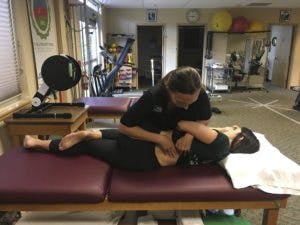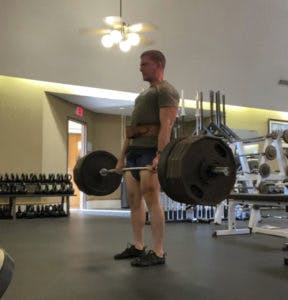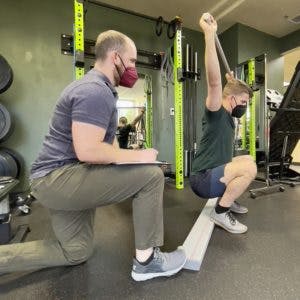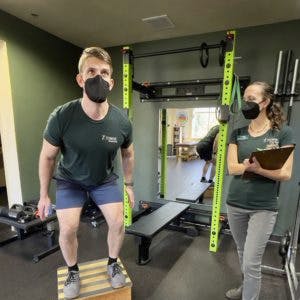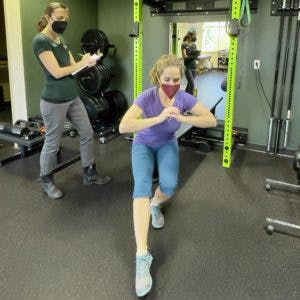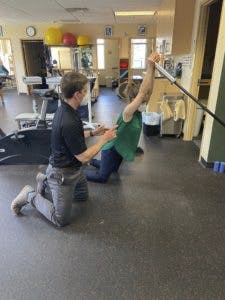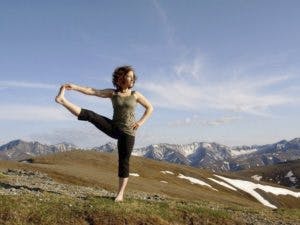Are you preparing to start hiking in the high country? Finally, the weather is improving and conditions are becoming more attractive to hiking enthusiasts to get out into nature and enjoy the scenery!
However, knee pain is always a concern amongst hikers, and shaking the pain off can be a nightmare… but you don’t have to give up on your adventuring dreams just yet as we’ve picked out 5 of the best and simplest tips to help you stop knee pain on a hike!
In this blog you can read about using hiking poles, wearing supportive shoes, and even how women can safely take care of nature’s business in the great outdoors!
Use Hiking Poles
Your knees bear the brunt of your entire body weight with every step you take, this can result in a lot of discomfort and pain after a while of trekking over different terrain and inclines.
However, introducing hiking poles into your equipment could offer a simple yet effective way to stop knee pain on a hike.
Not only do they distribute the pressure on your knees more evenly when you’re walking, but they also provide additional support and reduce the impact your knee joints feel as you walk.
Hiking poles could not only stop knee pain on a hike, but they can also prolong your trek so you can spend more time in nature and take in the beautiful scenery of the high country or desert terrain.
Stretch During Your Hike
Stretching during your hike could mean the difference between excruciating knee pain during your journey or a painless and enjoyable trip!
Taking a few minutes before and after your hike to stretch your legs, especially your calves and quads can make a world of difference.
And don’t forget the importance of taking rest breaks during your trek. Stopping to rest for a few minutes every hour can give your knees a much-needed break and help prevent injury.
Take Care Of Nature’s Business Safely!
This one’s for the ladies!
So picture this, you’re on a beautiful hike through the woods and you’re having a fantastic day. But you’re desperate to pee and your knees are starting to ache from the inclines you’re walking up.
Of course, there are no bathrooms, so you have to squat!
Squatting safely is very important if you’ve been putting strain on your knees all day. Proper form when squatting means keeping your knees behind your toes, engaging your core, and keeping your weight in your heels.
Not only will you be able to prevent discomfort on the trail, but you’ll also be able to effectively take care of nature’s business whilst out on your travels!
Stay Hydrated
If you enjoy the feeling of sunshine on your face and the sound of nature, hiking is a great way to get some exercise.
However, without proper hydration, a once pleasurable walk can quickly turn into a nightmare of fatigue and knee pain. That’s why it’s critical to stay hydrated when you hit the trails.
Not only does water help boost your energy levels, but it’s also essential for keeping your joints lubricated. By avoiding the wear and tear that comes with dehydrated joints, you’ll be less likely to experience knee pain on a hike.
So before you set out on your next trek, make sure you have plenty of water on hand, a hydration pack, or a water filter.
Trust me, your knees will thank you later!
Wear Supportive Shoes
As an experienced hiker, I cannot stress enough the importance of wearing supportive shoes when hitting the trails to stop knee pain on a hike.
The proper shoes will provide ample support and cushion to take the pressure off your feet, ankles, and knees, allowing you to maintain balance and stability while tackling rocky terrain.
Investing in high-quality hiking shoes with built-in arch support, thick sole, and durable tread will not only increase the enjoyment of your hike but will also prevent potential injury and discomfort.
Remember, always prioritize safety when hitting the trails.
Is Knee Pain Putting You Off Hiking? Try Our Free Knee Pain Consultation
Has knee pain been putting you off hiking because the pain is too bad or you’re worried about causing further injury to your knee?
Did you know all of your worries can be put to rest with our free knee pain consultation? During your free knee pain consultation you will be able to get 1 to 1 help and advice from our expert physical therapists and get information on the best treatment options available to you.
If you want to be able to get back out on the trails without knee pain holding you back, arrange your free knee pain consultation today by contacting our Durango clinic at (970) 259-0574 and we’ll look forward to seeing you in our clinic soon!
Other Free Resources For Knee Pain
Read Our Blog – Running And Its Impact On Your Joints
Read Our Blog – Runners And Hip And Knee Pain
On Social Media? Follow Us On – Facebook, Instagram, and LinkedIn

